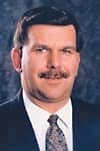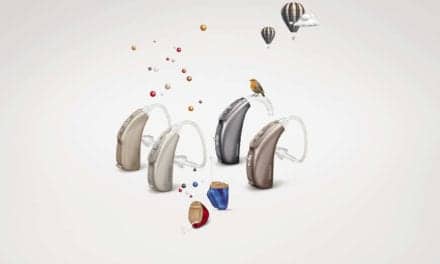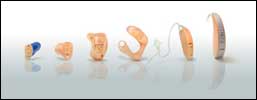
It is easy to take the hearing aid for granted. Its existence is a given for thousands of audiologists, hearing instrument specialists, and hard-of-hearing people. And for those who deal with hearing aids on a daily basis, it is easy to forget that these bits of molded plastic and circuitry that improve the lives of so many are the end product of the dedicated efforts of the talented men and women who drive the product development process.
At Siemens Hearing Instruments in Piscataway, NJ, the product development team has developed a highly effective “idea system” to ensure the best-possible end product. The system combines enough rigidity to ensure that the process maintains coherence with enough flexibility to ensure that discoveries made along the way can be incorporated into the final design.
At Siemens, product development always starts with an idea, an idea that can come from a variety of sources, not just the hermetic depths of the research and development laboratory. “It really is almost everyone’s job to come up with new ideas and to contribute,” says Pam Burton, MA, director of product management. “We solicit ideas for new products and new features or enhancements from sales. Their input may come from our customers, who in turn get their input from the consumers or the patients who wear the hearing aids. We really are dealing with the whole chain, from the user through the dispenser to the salesperson to our marketing department.” These ideas, no matter their source, are ultimately funneled through product management in the marketing department.
The Idea System
To manage this flow of ideas, Siemens uses a highly organized, automated idea system. “We have always had a process of generating ideas in-house from our R & D group, from our sales group, and from our customer support groups, because these are the people who are in contact with customers daily, hourly,” says Tom Powers, PhD, director of audiology and strategic development. “And they have an ear to what the marketplace needs, what they feel they don’t have, what voids they may feel may exist in products and services. That’s the type of feedback you try to get on a regular basis. But I think that in terms of really trying to develop it as a process, that’s something we’ve worked very hard at recently—over the past year or two—as opposed to saying, ‘Here’s a list of R & D projects and here’s a list of ideas, and somehow somebody will make a decision about what will happen.’ It’s something we’ve implemented recently to really derive more ideas from the marketplace,” Powers adds.
Ideas flowing into the company are electronically filtered into various categories—from cosmetic changes to electronic improvements to manufacturing innovations—using a special software package. Then they are turned over to a review panel that picks the ideas that are worth pursuing. A large part of this review process is cost benefit analysis. “We have a review panel within the company that periodically takes a look at [the ideas] and then presents them to a larger group of marketing and R & D staff and says, ‘Okay, these are the ideas we have,’” says Powers. “These are the new cosmetic ideas, these are the new signal processing ideas, these are the new manufacturing ideas, and what kinds of things do we think have the highest risk, lowest risk, highest reward, lowest reward. So it’s a risk/reward sort of process. That helps us decide what gets moved along in the development process.
“Unfortunately, they aren’t all low risk and high reward. Some of each category are taken into the project listing, because we think they can have an impact on the business, such as things that may relate specifically to pediatric fitting. The fitting of children on a worldwide basis is a fairly small percentage of the overall number of hearing aids sold, but for those people who are doing pediatric fitting, it’s a very important part of what they do every day. So if you’re going to be in a particular market segment, then you have to be in it; that’s where some of the development gets driven by the impact it will have on the market segment. Maybe not necessarily from a pure profitability standpoint, but in order to maintain your presence in a given market segment, there are just certain things that you have to have in your product development cycle that will support that business.”
Ironically, while the end result of this process is often technological innovation, rapid innovation can become an obstacle. “The downside to technology these days is that product life cycles have shortened considerably,” says Mark Balke, manager of international custom product development. “In the past we’d have a product that would be around 5, 6, 7 years, and now it’s maybe 2. A development cycle can be anywhere from 2 years, 3 years, even up to 5 years.”
Powers adds that there is another, more fundamental challenge the innovation team faces. “The challenge, of course, is getting the idea, and creating a mind-set, if you will, within any organization—not just Siemens—that any idea can and should be important,” he says, “and should be communicated within the organization so that it can eventually turn up in a product somewhere.”
A System of Checks and Balances
Once a new idea is designated as a project and goes through a feasibility process, it is turned over to the development teams for implementation. The process is governed by a system of checks and balances, with the marketing department setting the overall goals and specifications for the project. “The marketing requirement specification is the bible for that product as it goes along,” says Burton. “It really specifies everything, right down to components that have to be used to meet the requirement. Once something has been prioritized as a project we’re going to develop, it has to have a complete marketing requirement specification—this can be a 20 or 40 or 150 page document depending on how complex the product is.”
This does not mean, however, that the engineering teams cannot deviate from the plan. “You obviously leave some flexibility for the development group to implement it, that’s why you have an engineering group,” says Powers. “If they come up with other great ideas, the specifications can be amended. This does happen many times because the engineering group thinks up good ideas as well. But then the specification is amended and now we’re still working toward building what’s in the document. Every time someone wants to make a change to the document, the clear impact is time and dollars, of course. There’s a certain amount of flexibility, but there’s also a certain amount of not allowing it to sort of keep creeping off course.”
And this is where the checks and balances in the system come into play. “The nature of engineering is to solve the problem, in a positive way,” says Powers. “Sometimes the problem can create other problems that also need to be solved, and eventually you get into…creeping elegance. Creeping elegance is that phenomenon where you’ve defined a project, but if you could only do this or that, then that would make it better…next thing you know you’re a year beyond the originally planned completion date. You think you have a better product, but nobody’s ever going to know it; you never move it to the marketplace. A certain amount of that has to happen in the process—there needs to be that flexibility—because without it you run the risk of not implementing some good things, but there’s that fine line where you hit the line of creeping elegance.”
Many of the improvements the engineering teams are implementing are focused either on improving the circuitry inside the hearing aid or on improvements in manufacturing, which will make the devices easier and cheaper to produce. “The circuit is the core piece of this product,” says Powers. “Today, most of what we’re developing are digital circuits. The circuit itself is a core part, but something else that often needs to be addressed for custom products is whether or not there is a special feature or need that would require a change to a faceplate or new plastic parts. In the case of a behind-the-ear product, we also have tooling that has to be planned for the housing of the product, the battery compartment, the sides of the housing, the little plastic earpiece that goes over the ear that the ear mold attaches to, all of that tooling has to be planned…how are the electronics going to fit in, where does the microphone fit in, where does the receiver/loudspeaker fit in, how big a battery do we need, what kind of power supply, all those decisions are running parallel. Now we’re starting to make all the components that will turn into a hearing aid. And those first things, whether it’s the circuit or the parts, all have to go back to the R & D process.” All of these steps are governed by ISO 9000 standards, company guidelines, and FDA requirements.
Parallel Paths
Not all of the research and development is done by Siemens’ New Jersey location. There are also laboratories in Germany and Singapore. Each laboratory specializes in particular engineering issues, so they do not duplicate each other’s efforts, stalling the process. The development teams include software engineers, mechanical engineers, and acoustic engineers, all working parallel to each other. “Each of those groups is working on their piece of the puzzle, yet they all have to keep a vision of what the puzzle’s going to look like when they’re finished,” says Powers.
Once a prototype is produced it moves to clinical testing. Prototypes are tested internally at Siemens and externally at various university or clinical settings. It is during this period that the marketing department again enters the process. “If it’s really dramatic, such as a new generation digital signal processor, we ask ourselves, ‘Are there any marketing claims that can grow out of that clinical investigation?’” says Powers.
“There are other hurdles that Siemens has to deal with in the United States,” says Balke, “including strict government regulations. The upside is that regulation is very strict only in the United States. In Europe there’s an issue related to ISO, and there’s an approval system, but it’s not regulated like it is here. The downside is that it’s a burden, but the upside is that it makes sure that there are certain steps that have to be in place, and it helps with product development.”
“Siemens Hearing Instruments is part of the Siemens Medical Group and is,” says Balke, “the most ‘personal’ of the divisions because its product line is exclusively consumer-level products.” The division is completely autonomous from the rest of the company, but it also benefits from the larger corporate entity. “Because everything is software driven, we tend to communicate with corporate research more than in the past,” says Balke. “There are benefits. As a relatively small division of Siemens, we don’t have to carry big corporate overheads; the corporate body does that. You pay for the services that you use.”
Powers says that it is having the coordinated development system in place that allows things to get done and gets the products to market. “The old adage that your carpenters measure twice and cut once is very important,” he says. “If it’s done right up-front, you would hope that you would have one small iteration. If attention isn’t paid, you could end up with two or three iterations. You could eat up half a year just redoing the circuit and that’s a lot of time and money. Once it’s gone, it’s gone.”





